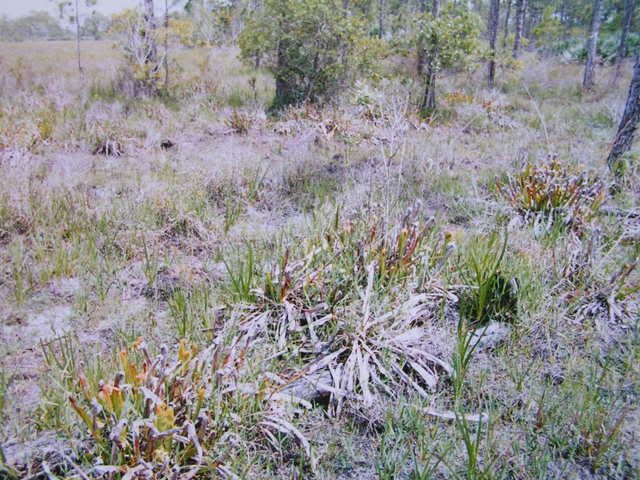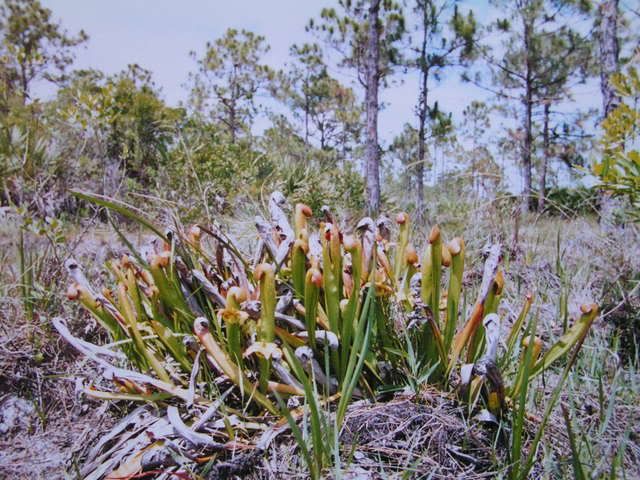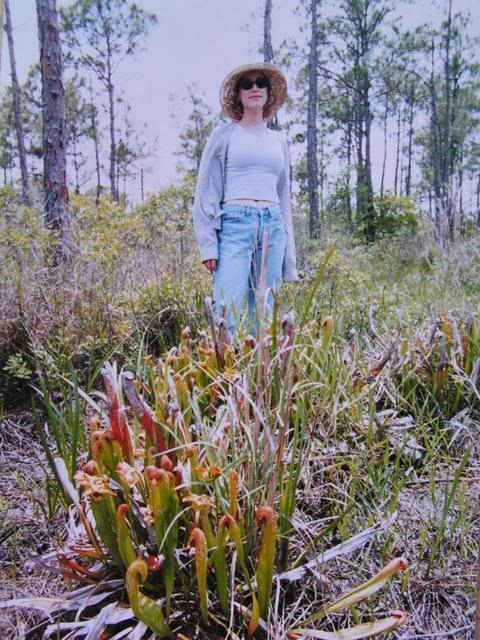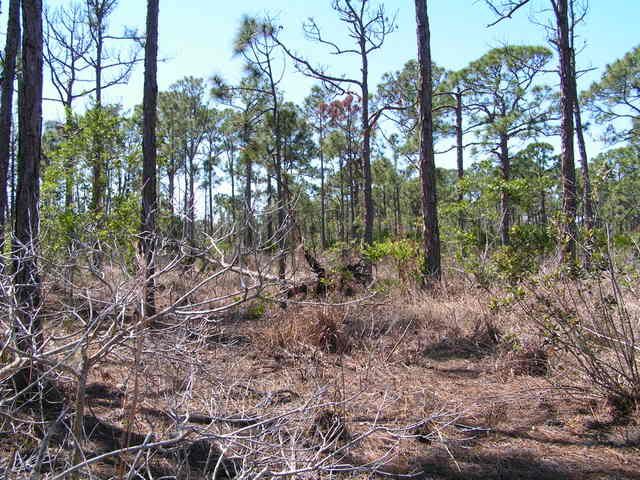|
|
Post by sunbelle on Mar 19, 2007 20:01:50 GMT
Back in April of 2004 a firend of ours told us about a stand of S. minor located EAST of I-95 near the city of Fort Pierce in St. Lucie County, FL. The site was on property owned by the railroad. The last we heard, the land was sold to a developer and will be turned into an industrial park. The county of St. Lucie made efforts to move the stand to another location, but there were too many minors to move. At the time, our friend who was invlolved with the rescue efforts with the county gave us some of the plants that were going to be destroyed. We still have these S.minor from St. Lucie Cnty in our collection today, and our friend still has a few in his collection as well. The S. minor from St. Lucie county is different from the Okeechobee stand. Okeechobee is inland, in the middle of the FL peninsula at the very top of Lake Okeechobee. Winter conditions there are much colder than the Fort Pierce, St. Lucie county site. The St. Lucie County site is much closer to the east coast (on the Atlantic ocean side) and because of the moderating effect of the water and gulf stream, that site always has warmer winters. It's about as far south as the Okeechobee site, give or take a few miles. What is really amazing is how this location begins to fall in to a sub tropical condition. This site is about an hour drive north of us. We were able to visit several times back in April of 2004. Here are some additional photos of this special S.minor site, many of these pics are not posted on our website (please excuse the quality, these were taken before we got the digital camera, so they are copies and not the most sharp and detailed) Remember, these were taken three years ago in April 2004 Here are some wide shots of the environment  These were HUGE clumps... and these photos were taken after our friends had done massive collecting with permission from the County.   Like we wrote above, these photos show what was left over AFTER several collecting sessions. If every collector that wanted one got one, there would be thousands left over.          Here is Michelle with the S. minors  |
|
|
|
Post by sunbelle on Mar 19, 2007 20:03:52 GMT
Since we’re only about an hour drive from this St. Lucie County S. minor site, we have wanted to go back and see if it was developed. We had the chance to go up there this past Saturday. Expecting to see an industrial park, not S. minor habitat, we got in the car and headed up I-95 with the music blasting, camera loaded with batteries, and a bag & shovel in the trunk just in case there were any S.minor still there. We turned the corner onto the road where the site becomes visible…. And RELIEF! The site is still there! Here is what the site looks like from the road (new pics, taken Saturday)  Before we even get back into the area where the minors grow, the surrounding area has D. capillaris   There were signs of fire, looks like a little over a year ago.  The place looks totally different. We use landmarks we know to find our way to the S. minor.  There were GIGANTIC clumps growing here… in this exact area. Now there are none.  Where the heck are the plants? We looked, and looked, and looked.  Finally, we found the dead Sarracenia minor rhizomes.  What could have happened?  It could have been a series of bad events finally killed them. Perhaps a bad fire, then three hurricanes back to back hit that area. Looks like they’ve been dead for a while now. There are no dried minor pitchers, no flower stalks with pods, no sign of them -except for the rhizomes.  The rhizomes are brown and mushy inside, not a sign of seed sprouting. Nothing was left. Here is a photo of one of our plants in our collection. We have two beautiful, large, healthy plants. They bloom every year and we have seed as well (true to location).  If it wasn’t for the few plants that were collected from this site and given to us, they would be gone now, lost forever… from natural causes, not development. Thank goodness for the few plants in cultivation. ---- As for the issue of collecting exceptional plants versus typical for the stand… WE DO BOTH…. and WE ARE THE HORTICULTURISTS. We have fancy, very complex man made hybrids made just for horticultural interest or simply “something pretty to grow”. We also have our “true to location” species breeding, were we cross typical specimens from the same stand to each other, as would happen in nature. ****************** The minor pics are an ICPS forum exclusive, you won't find this info anywhere else on the web... but we do have older photos of this S.minor site published on our webpage at this address www.sunbelleexotics.com/Sunbelle/Photo_Wild_S.minor.htmHope you all find this interesting. We look forward to hearing feedback. Michelle and Trent |
|
|
|
Post by Not a Number on Mar 19, 2007 20:43:25 GMT
How sad. At least a few specimens survive. I'm glad they are in good hands.
|
|
Clint
Full Member
Posts: 808
|
Post by Clint on Mar 19, 2007 22:46:22 GMT
Fantastic work, bravo! You did a good thing preserving this plant!
I'm going to move this to the appropriate area, News from the Field under the North American section.
Once again, good job and thank you!
Clint
|
|
|
|
Post by ozzy on Mar 20, 2007 3:25:35 GMT
Whole stands of any plant don't normally just die. I highly doubt that the hurricanes would have killed them. I wouldn't think that a fire would have killed all of the plants either. I would think it is more likely that development nearby has changed the underground water flow, making the ground too dry. Nearby development could also change the water quality. Maybe the flooding from the hurricanes washed chemicals from a nearby golf course onto the site. They could have been sprayed with herbicides.
The only way I can think that this is a natural event would be if some disease.
What ever happened, it was a very nice S.minor site, and I'm glad that at least some were saved.
|
|
|
|
Post by sunbelle on Mar 20, 2007 12:19:25 GMT
Whole stands of any plant don't normally just die. I highly doubt that the hurricanes would have killed them. I wouldn't think that a fire would have killed all of the plants either. I would think it is more likely that development nearby has changed the underground water flow, making the ground too dry. Nearby development could also change the water quality. Maybe the flooding from the hurricanes washed chemicals from a nearby golf course onto the site. They could have been sprayed with herbicides. The only way I can think that this is a natural event would be if some disease. What ever happened, it was a very nice S.minor site, and I'm glad that at least some were saved. Well, Ozzy, I don't think fires and hurricanes normally kill entire stands either, but as we said in our post, it would have been a series of bad events that finally did it. For your information, hurricanes spread pathogens. We have had many "mystery death" problems after we are hit by hurricanes, ... and most of the Sarracenia that were victims of of the mystery hurricance death in our collection were S. minor from the St. Lucie county stand as well as our big 'Okee' giant. We were perplexed by the total death of all the S. minor in the area... they are not near a golf course, and the new nearby development has not changed since the site was alive back in 2004. |
|
|
|
Post by ozzy on Mar 20, 2007 14:02:40 GMT
I know what it's like to go through multiple hurricanes. In 96 (I think) We had two in a month. In 99 we had 3 in just over a month. Both times, the area I live was devastated.
Of course, everything I said in the previous post was only guesses at best. These plants depend on fire to survive. The only way the fire would have killed all of them would be if the area was overgrown, that would make the fire burn hotter than normal and that would kill them. From your previous pics I don't think that is the case.
I don't know the area and so anything I suggest can only be a guess. I would think that the "unknown pathogens" would be lawn chemicals from all the development in the area. I would think the same thing happened to these plants.
It was a great site, and hopefully what ever killed them are no longer on the site and some seeds survived and will repopulate. It's just sad that all those plants are gone.
|
|
|
|
Post by BarryRice on Mar 22, 2007 15:59:58 GMT
A few questions about the plant mortality.
The site looks really dry overall. Are all the plants, of multiple species and families, all dead? Is this typical for this area and this time of year?
Were monocots and dicots killed equally?
Barry
|
|
|
|
Post by sunbelle on Mar 23, 2007 2:01:43 GMT
Hi Barry,
It's a strange cross section. the ferns which were so closely associated with the S. minors took a hit as well, but seemed to be recovering. No question about a fire either one or two seasons ago. This is our dry season, and when we visited in '04 it was about this time of year, so conditions are normally dry until the rain cycle starts at the end of May. A friend brought up a very good point. The stand is next to a Walmart Distribution Center, a major structure visible from the bog area of this parcel of land. It is very likely that fire fighters may have employed chemicals to put out the fire. It would have been a threat to millions of dollars of property and we would not be surprised if helicopters were spraying the area .
|
|
|
|
Post by BarryRice on Mar 23, 2007 19:04:53 GMT
This is something I was getting to. It looks a lot like herbicide or chemical damage, but it's so hard to tell from photos. Look for suspicious yellowing of undamaged foliage, or witch's broom growth on shoots of plants.
Very weird. Very sad.
Barry
|
|
|
|
Post by RL7836 on Mar 23, 2007 23:25:30 GMT
Since this is an area they are developing, have they ditched so deep that they've lowered the water table?
Also - since this site has been around for XX? years, there should be viable seed in the soil - no? It's difficult to believe that they'd use a pre-emergent herbicide - but....
|
|
|
|
Post by BarryRice on Mar 24, 2007 1:10:16 GMT
Hmm. Thinking about this more, I really can't see why anyone would put down actual herbicide. All that would happen is that you'd kill everything, but in about a year new plants---probably disturbance friendly annuals and stuff like that---would come rebounding back. What would be the point of putting down expensive herbicide for that?
I'm thinking that probably the developers have put in some ditches or tiles, and are just letting the site dry out. That fire you mentioned might have been hotter than usual because of the decreased moisture, too.
Hmph.
|
|
|
|
Post by pinglover on Mar 30, 2007 2:47:52 GMT
Drain tiles! I hate those things. I have been collapsing them left and right on my property. Many of which were in place for decades. If a fire burns too hot, everything can be destroyed.
|
|
|
|
Post by Alexis on May 18, 2007 20:48:10 GMT
I suppose you'd need to dig down to see what was happening. I thought sarracenia could lay low in times of drought?
|
|
|
|
Post by Dave Evans on May 18, 2007 23:31:34 GMT
This is how development affects Sarracenia. The ditches go in. The water poors out. Things look the same, though, until there is a drought, then all the Sarracenia fade, over years of time or in one season. I suppose you'd need to dig down to see what was happening. I thought sarracenia could lay low in times of drought? |
|
















































